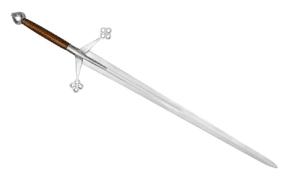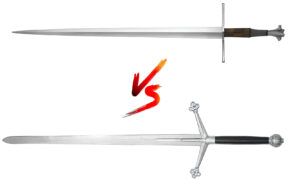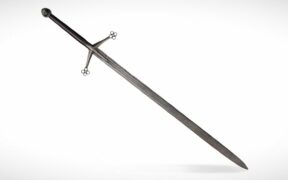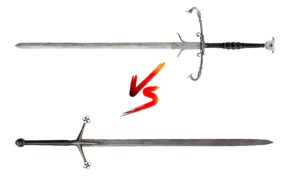The Origins and Historical Significance of the Highland Claymore
NO AI USED This Article has been written and edited by our team with no help of the AI
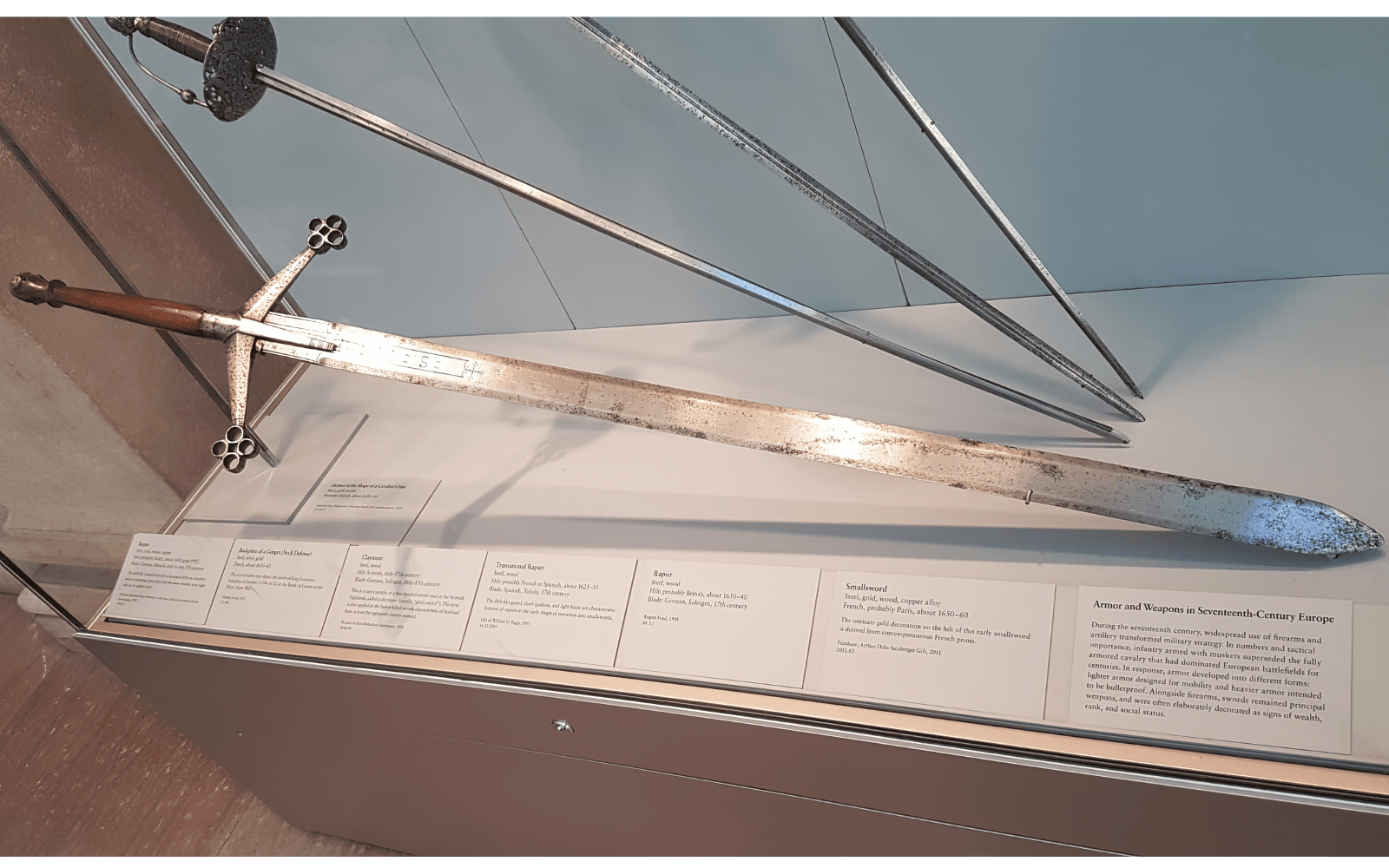
The claymore emerged in the Scottish Highlands during a time of clan feuds and border wars with the English. Although the name claymore refers to two different types of Scottish swords, we will focus on the two-handed Highland claymore, which is considered the true claymore.
Let’s explore the history and development of the Highland claymore, tracing its evolution from its earliest recognizable forms to the emergence of the two-handed types.
The Birth of the Highland Claymore: Early Beginnings and Influences
The Highland claymore, as well as other Scottish two-handed swords, evolved from single-handed Scandinavian-type swords used throughout Scotland from the 11th to 13th centuries. By the late 13th century, the first distinctively Scottish sword type emerged, eventually developing into more advanced and larger forms.
Sword Carvings on Grave Slabs
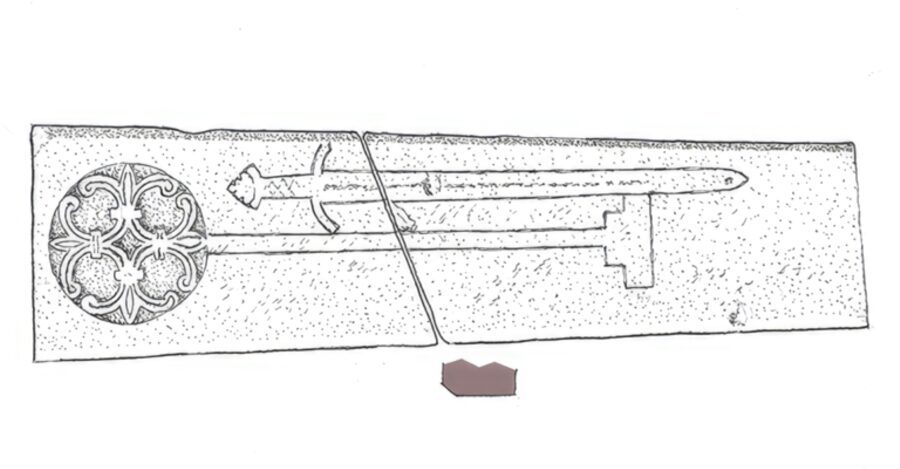
The early beginnings of the Scottish sword are evident in grave carvings, a tradition that developed in the West Highlands as a form of art. These carvings include depictions of contemporary swords, typically life-sized and often shown in their scabbards.
“The swords are remarkably detailed and almost certainly copied from individual physical examples,” says Tony Willis, an expert at the American Society of Arms Collectors.
The Early Scottish Sword Forms
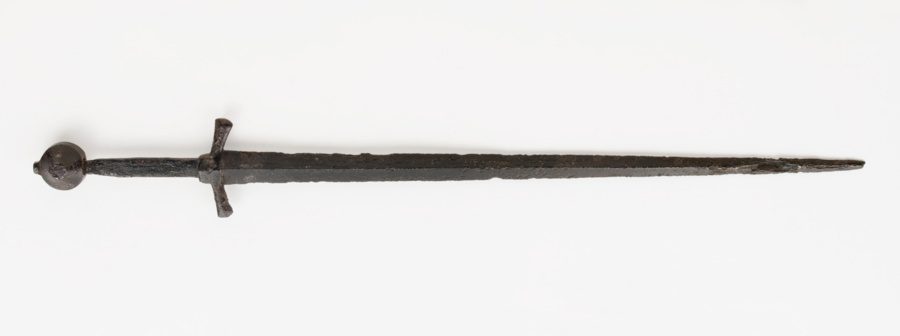
By the early 14th century, the first distinctive Scottish sword design had emerged, though surviving examples are rare. Its evolution from the earlier Scandinavian-type sword is evident in its crossguard with downward-sloping arms. However, it features a wheel pommel, which is believed to be a Scottish adaptation of the European wheel pommel.

Later Scottish sword designs featured longer crossguard arms that sloped downwards. Their crossguard arms also terminated into flat, spoon-shaped or diamond-shaped terminals.

A paper by Ralph Moffat, an expert on European arms and armor, concludes that the distinctively Scottish sword design was recognized for its attractive finish. The decorative sword hilts on Scottish swords were likely just a continuation of earlier Scandinavian traditions in Scotland, started by Vikings who frequently inlaid their sword hilts with soft metals.
The Emergence of the Proto-Highland Claymore
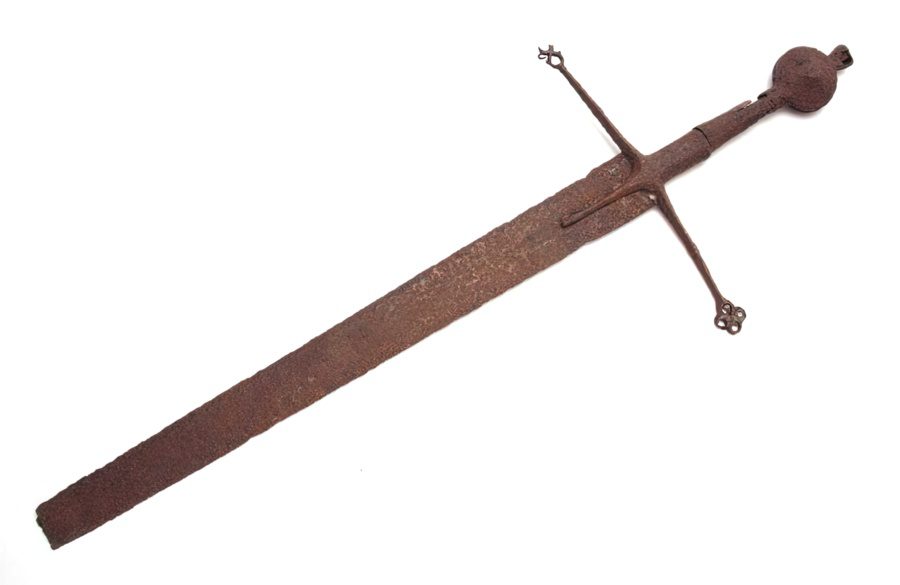
By the early 15th century, early Scottish sword designs in the West Highlands were replaced by transitional or prototypes of the Highland claymore. It is distinctive for its quatrefoil terminals and long langets, which are extensions of the crossguard that extend down the blade. However, these transitional swords do not have the large proportions of the two-handed Highland claymore.
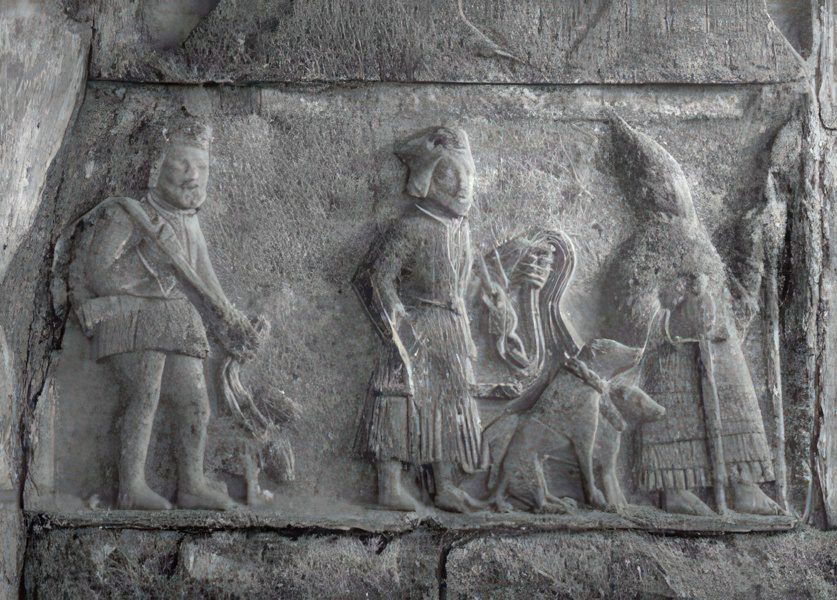
The gallowglass, a member of the professional warrior class in the West Highland, used the proto-Highland claymore as depicted in tomb effigies. They were foreign warriors in Irish service from the medieval to early modern periods, but they more likely originated from Norse-influenced areas in Scotland.
The Two-Handed Highland Claymore

By the mid-16th century, transitional swords had evolved into the fully developed two-handed Highland claymore. This weapon became a significant part of the West Highland armory, utilized by both Highlanders and Gallowglass. Tony Willis, in his paper, suggests that the early type of two-handed Highland claymore was likely a captain’s weapon and a badge of rank.
The Redshanks, the mercenary force of the Highland clans, also used the two-handed claymore in their battles in Ireland. During the Battle of Carrickfergus in 1597, the Scots were reportedly carrying sloughe swords (slaughter swords), which were the contemporary terms for two-handed swords. These swords were likely the two-handed Highland claymores.
The Development of Two-Handed Swords in Europe
During the late medieval period, two-handed swords evolved from earlier single-handled sword types, reaching their fully developed form by the late 15th century. These formidable weapons were wielded by specially trained men who fought on foot, particularly against enemy pike formations. They were also employed in the defense of castle and town walls, for guarding banners, and in single combat.
In the 16th century, the two-handed sword saw significant evolution in Scotland, where three distinct types emerged: the Highland claymore, the Lowland sword, and the clamshell-hilted sword. These two-handed swords are linked to distinct cultural regions in Scotland, including the West Highlands, the Lowlands, and the East and Central Highlands.
By the end of the 16th century, the use of two-handed swords shifted primarily to ceremonial functions. They were often carried point upwards in processions. As a fighting weapon, the two-handed sword had largely disappeared across Europe by the early 17th century, although it continued to be used in ceremonies long after.
Shaping of the Highland Claymore by Politics, Society, and Region
The Highland claymore was influenced by various factors within Scotland including its political, social setting, and regional diversity.
Political and Social Setting in Scotland
During the 16th century in Scotland, the Highland claymore along with other two-handed swords and weapons became widespread due to the increasing clan warfare across the country, particularly in remote regions beyond royal control. Small-scale skirmishing, raids, and ambushes between groups were common.
People carried weapons for self-defense, making the civilian population of Scotland more martial and aggressive compared to most other European countries. “Young Scottish men living in otherwise comparable farming communities were trained more intensively in the use of weapons from an early age,” says Tony Willis.
Geographic Region of Scotland
The Highland claymore developed in the West Highlands, a unique Gaelic community distinct from other regions of Scotland. The West Highlands, facing the Irish Sea and Gaelic Ireland, developed as a maritime culture after the Viking era. Travel between communities was primarily by boat, and the people of the West Highlands did not consider themselves under the rule of a distant Scottish king.
The West Highland Claymore developed in this region as a representation of its Gaelic culture. It was a versatile weapon, well-suited to various terrains and situations, and it was frequently wielded by West Highland mercenaries who fought in Ireland.
Conclusion
The Highland claymore evolved from Scandinavian-influenced swords used in Scotland during the late Viking and post-Viking eras. By the 16th century, the two-handed sword became a significant weapon for Highlanders, Gallowglass, and the Redshanks. The legacy of the Highland claymore endures, celebrated in Scottish history as a testament to the valor of the Highland warriors.
